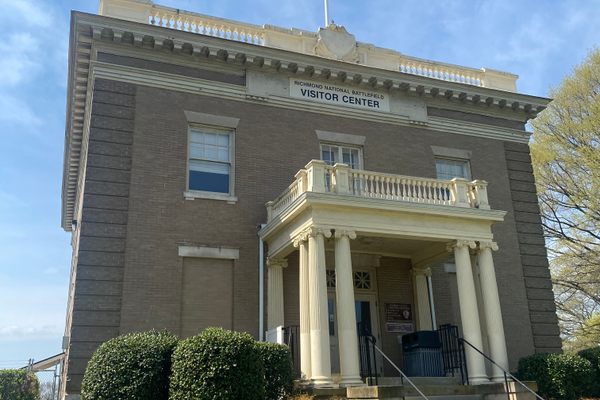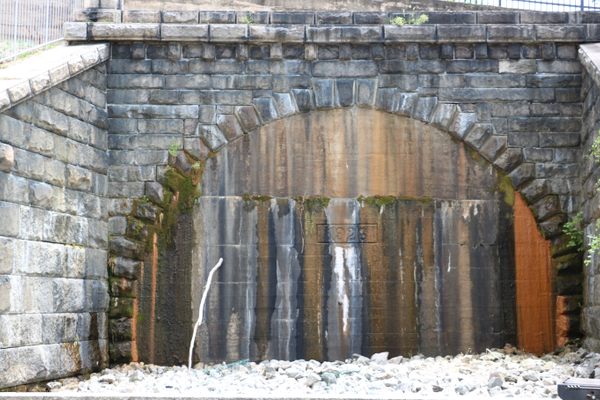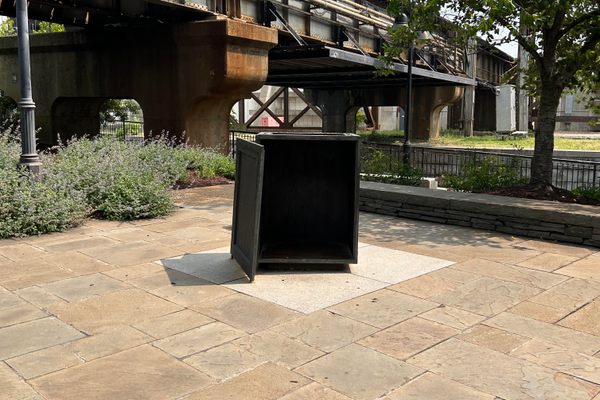Connecticut the Indian
The iconic statue was moved to a new spot overlooking the James river after several years as a mascot for the local baseball team.
The residents of Richmond, Virginia have someone watching them all the time: a 10-foot-tall, 2,400-pound someone.
Connecticut, a statue of a Native American man, stares down at the James River from a rooftop downtown in Richmond. The sculpture is the work of the Richmond artist Paul Di Pasquale, who created the statue in the early 1980s as a tribute to the area’s native inhabitants. (Good intentions notwithstanding, the statue has received criticism from representatives of Virginia’s Native American community.)
The rooftop in the Shockoe Bottom neighborhood is the statue’s third home. Fabricated for the roof of a liquor store at 2600 Connecticut Avenue in Washington, D.C., a family dispute blocked its installation. Di Pasquale sought a new home and Frances and Sydney Lewis became interested. The Lewises, who founded Best Products Company in Richmond in 1957, were collectors of contemporary art and commissioned nine tongue-in-cheek catalog showrooms from James Wines’ “Sculpture in the Environment” (SITE).
Best Products leased the sculpture from Di Pasquale with the intention of installing it at a showroom in Fairfax County, Virginia. However, local officials ruled that the statue was a sign and in violation of rooftop signage codes. The company did get the figure installed at its Bethesda, Maryland showroom in September 1983 but eight months later, the Montgomery County government refused to grant further permits. Connecticut was put in storage.
The Richmond Braves were next to lease the statue, placing it on top of a concession stand at The Diamond, the Triple-A baseball team’s new stadium, built in 1985. For nearly 25 years, Connecticut kept watch over the Diamond as the mascot of the Braves. But in 2010, the Braves moved out of Richmond and Connecticut needed a new home. After interest from schools and other institutions, the sculpture was moved to the Lucky Strike power plant, an old tobacco factory complex that was being converted into loft apartments and offices. He remains there today, where he does, in fact, look over a tidal river: the James.
Update June 2019: The statue was removed earlier this year and is being rehabilitated by its original artist, Paul Di Pasquale. No word yet on when or where he’ll show up next, though rumors are that the open nature of his home for the last eight years on top of the Lucky Strike building leaves him too exposed to the elements.
Know Before You Go
The sculpture is in storage right now being restored by the original artist.
Community Contributors
Added by
Edited by
Plan Your Trip
The Atlas Obscura Podcast is Back!
























Follow us on Twitter to get the latest on the world's hidden wonders.
Like us on Facebook to get the latest on the world's hidden wonders.
Follow us on Twitter Like us on Facebook